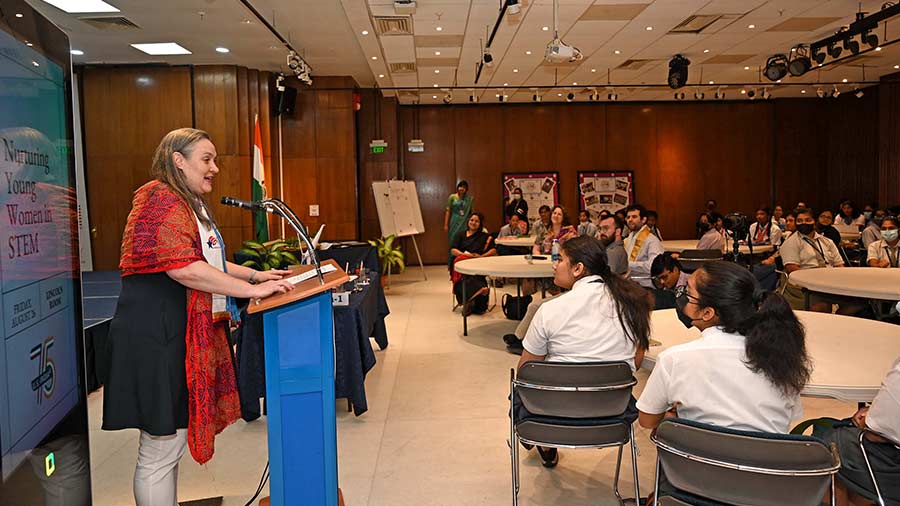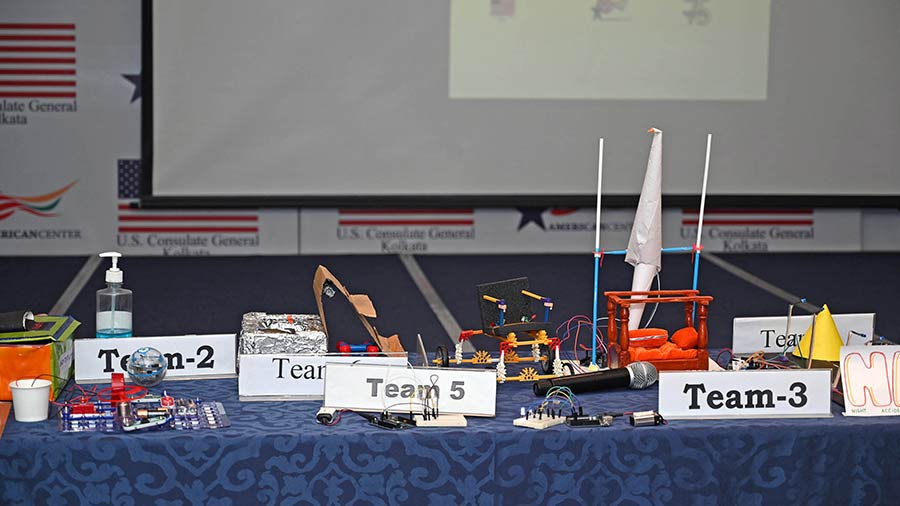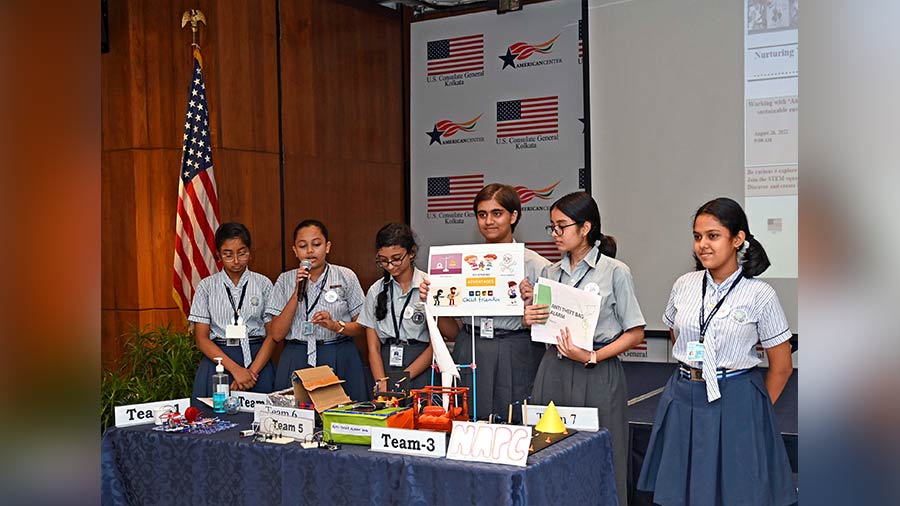How helpful would it be if cars could detect incoming dangers and prevent accidents? Imagine “nabbing” a snatcher red-handed by raising an alarm. These and several other prototypes developed by students of various schools were a part of the Nurturing Young Women in STEM Project. They showcased their work during the grand finale at the US Consulate, Kolkata, on August 26.
Training STEM champions of tomorrow
The project was facilitated by Madhumita Seal, Women in STEM Project coordinator and vice-principal BDM International School. It started last year and through the sessions, students developed model prototypes using the American Makerspace Kits which solved problems in the society by using STEM principles while adhering to the United Nations Sustainable Development Goals.
Vice-principal Madhumita Seal said, “While we began the project last July, we thought of involving women. Several students may take up science but soon most fizzle out. We wanted to embark on such a journey to make the students aware that taking up STEM as a workforce is exciting. In Bengal, if students opt for science, they have to do a lot of rote learning and hence many may lose steam and opt for other streams midway. These projects help them understand that STEM is about curious thinking, about being imaginative, about thinking out of the box and of the sustainable future.’’

US Consul General Melinda Pavek addressing students Amit Datta/My Kolkata
Students from around 22 schools participated. 50 students from 14 schools were selected for the final presentation. Schools which attended the event include Shri Shikshayatan School, BDM International, SGS International School, Garden High School, Modern High School International, Modern High School for Girls, Loreto House, Asian International School, South City International School, Sri Sri Academy, Adamas International School, Samaritan Help Mission, Gokhale Memorial Girls’ High School and St. John’s Diocesan Girls’ Higher Secondary School.

The seven prototypes designed by students keeping the STEM and Sustainable Development Goals in mind Amit Datta/My Kolkata
Seven models of change
The models ranged from measuring water levels through sensors to a spherobot which enabled one to detect obstacles in their path so that they can be avoided. Spherobots would also be helpful to the visually challenged. A team devised a portable bedside lamp and an anti-theft bag alarm which would detect movement if the bag is touched or opened and would trigger.
For those who are physically challenged, a fully automated wheelchair was designed while smart streetlights were devised to utilize solar energy to avoid global warming. The night accident prevention model helps detect obstacles or headlights and stops the car automatically so that collisions can be averted. The waste garbage collector model attached with sensors can sense garbage strewn on the road and collect the same for better waste disposal while keeping the streets clean.
Melinda Pavek, US Consul-General to Kolkata, said, “Today, I really felt the energy in the room. As you were presenting your projects, I can say that you had spent a lot of time and effort researching on specifically Sustainable Development Goals. Many may be aware of SDGs but don’t know the details. Your presentations were really wonderful which clearly explained things in detail. Some of you have also backed up your work with statistics. I really appreciate your efforts.’’

Students speak about the prototypes Amit Datta/My Kolkata
Learning through teamwork and observation
The students underwent a hybrid mode of learning and understanding of the STEM principles which guided them towards its necessity and the revolutionary innovations it can bring about.
Devashree Bhunia, a Class IX student from Shri Shikshayatan School, said, “We made the anti-theft bag alarm and the bedside lamp. I learnt a lot about teamwork. We, initially, thought that teamwork would be serious but it was so much fun. Our mentors, teachers were extremely helpful. We also learnt from other teams a lot and plan to incorporate the same in our next project.
